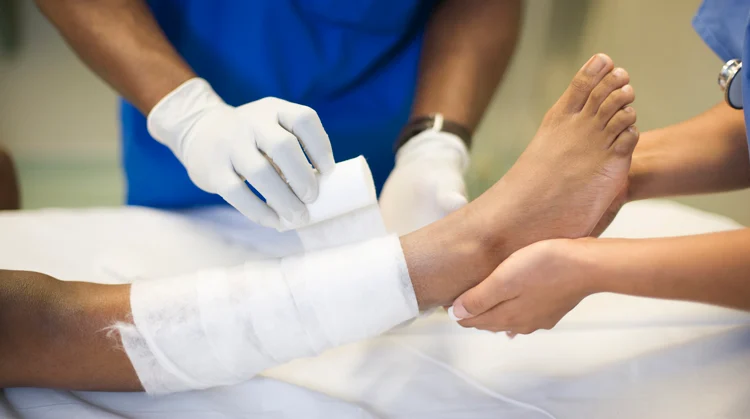Understanding the Need for a Wound Treatment Center
A wound treatment center plays a vital role in helping patients recover from complex and chronic wounds that do not heal with ordinary first-aid care. Unlike typical injuries that may close up within days, certain wounds require a higher level of medical expertise and technology. These include diabetic ulcers, surgical wounds, pressure sores, and burns that demand precise care and continuous monitoring. When wounds are left untreated or improperly managed, complications such as infections, tissue damage, and even amputation can occur. A wound treatment center focuses on restoring skin integrity while preventing these risks from worsening. Through evidence-based medical practices, such centers help patients regain mobility, confidence, and comfort in their daily lives. This specialized care transforms the healing process into a structured, monitored, and results-oriented journey rather than a matter of chance.
How Specialized Wound Care Works
Specialized wound care goes beyond cleaning and dressing an injury. It involves an in-depth understanding of how tissues heal, how infections form, and what factors delay recovery. At a wound treatment center, healthcare professionals perform comprehensive diagnostic assessments to evaluate blood flow, tissue damage, and underlying conditions such as diabetes or vascular disease. These assessments allow for the creation of a personalized treatment plan tailored to each patient’s specific needs. A team of wound care specialists, nurses, and physicians collaborate to ensure that each step in the healing process is monitored and adjusted as needed. This multidisciplinary approach provides patients with a seamless continuum of care. Furthermore, by using state-of-the-art techniques and equipment, wound centers can significantly accelerate tissue regeneration and minimize complications. Every decision made in specialized wound care is backed by science, data, and years of medical expertise.
Advanced Treatments and Techniques in Modern Wound Centers
Modern wound treatment centers integrate advanced therapies and technology to promote faster healing and reduce pain. One of the most effective techniques is Hyperbaric Oxygen Therapy (HBOT), which increases oxygen supply to damaged tissues, enhancing their ability to repair. Another innovation is the use of bioengineered skin substitutes that replicate human tissue to cover wounds and encourage natural regeneration. Negative Pressure Wound Therapy (NPWT), a suction-based technique, helps remove fluids and bacteria from wounds, keeping the area clean and fostering rapid healing.
Some advanced treatment options include:
- Hyperbaric oxygen therapy (HBOT) to boost oxygen flow and tissue repair
- Negative pressure wound therapy (NPWT) to remove fluids and stimulate healing
- Bioengineered skin grafts and tissue substitutes to replace damaged skin
- Antimicrobial dressings for infection control
- Growth factor therapy to stimulate cell repair
These methods reflect the technological evolution of modern medicine. Patients no longer rely solely on traditional wound dressings; instead, they benefit from precise, science-backed therapies designed for faster recovery and improved comfort. Through innovation and continuous research, wound treatment centers are transforming the way healing is achieved.
Common Types of Wounds Treated in a Wound Treatment Center
Not all wounds heal at the same rate or respond to standard care. That’s why wound treatment centers specialize in managing different wound types that need professional attention. Chronic non-healing wounds, such as diabetic foot ulcers, venous ulcers, and arterial ulcers, often require specialized interventions due to poor circulation and infection risks. Post-surgical wounds that reopen or fail to heal properly are also handled with great care to prevent complications. Pressure injuries, commonly known as bedsores, occur in patients with limited mobility and need continuous care to restore skin health. Burn injuries and radiation-related wounds also fall under the expertise of wound centers. Recognizing when a wound requires medical intervention is crucial—if it shows persistent redness, foul odor, pus, or delayed healing, it’s time to visit a wound specialist. These centers focus not only on treating visible symptoms but also on addressing the underlying causes to ensure long-term recovery.
The Benefits of Visiting a Dedicated Wound Treatment Center
Choosing a dedicated wound treatment center offers many advantages over general healthcare facilities. Patients benefit from the expertise of professionals who specialize solely in wound management and recovery. With individualized treatment plans, healing becomes faster, safer, and more effective. The centers provide consistent monitoring, which reduces the risks of infection, delayed healing, or amputation—especially in diabetic or elderly patients. Patients also receive education about preventive care, proper nutrition, and home-based wound management techniques. Moreover, these facilities focus on holistic healing by considering circulation, mobility, and lifestyle adjustments. The result is not just physical recovery but also an improved quality of life. Visiting a specialized wound center ensures comprehensive, compassionate care tailored to each patient’s needs.
The Role of Multidisciplinary Care in Wound Healing
Wound treatment centers thrive on collaboration among different healthcare professionals. Doctors, nurses, dietitians, and physical therapists work together to create an effective and sustainable healing process. For instance, nutritionists help patients maintain a diet rich in vitamins and proteins that support tissue repair, while physical therapists assist in improving blood circulation and mobility. For patients with chronic illnesses like diabetes or vascular disease, this teamwork ensures that every aspect of health is managed carefully. Beyond the physical, many wound centers offer psychological support, helping patients cope with the stress and frustration of long-term treatment. The combination of medical expertise and emotional care fosters a positive healing environment where patients feel supported and motivated. Multidisciplinary care transforms the healing journey from a medical procedure into a personalized, holistic experience that addresses both the body and the mind.
Choosing the Right Wound Treatment Center
Selecting the right wound treatment center can make a significant difference in recovery outcomes. Patients should look for facilities with proper accreditation, experienced medical staff, and advanced treatment technologies. A reputable center will also provide transparent information about available therapies, expected timelines, and patient care standards. Accessibility and patient reviews are also key factors to consider. It’s important to ask questions such as: What types of wounds do you specialize in? Do you offer hyperbaric therapy or other advanced treatments? How is patient progress monitored? By seeking answers to these questions, patients can make informed decisions that align with their medical and personal needs. Ultimately, the best wound treatment center is one that prioritizes patient comfort, safety, and long-term health.
Preventing Future Wounds
Wound prevention is an essential part of maintaining overall health, especially for individuals at high risk. Simple habits such as keeping the skin clean and moisturized, wearing properly fitting footwear, and avoiding prolonged pressure on certain body parts can make a big difference. For diabetic patients, regular foot checks and proper blood sugar control are crucial in avoiding complications. Good nutrition, adequate hydration, and regular exercise also help maintain strong, healthy skin. Early detection of skin changes or minor wounds can prevent major infections. Preventive care is not just about avoiding injuries—it’s about creating a proactive approach to wellness. Through consistent education and proper lifestyle adjustments, patients can significantly reduce their risk of future wound-related complications.
Frequently Asked Questions (FAQ)
What types of wounds require treatment from a wound center?
Chronic, non-healing wounds such as diabetic ulcers, pressure sores, and post-surgical complications typically require professional care at a wound treatment center.
How long does it take for a chronic wound to heal under professional care?
Healing time depends on the wound’s severity and underlying conditions, but most patients experience significant improvement within weeks of consistent treatment.
Do I need a referral to visit a wound treatment center?
In most cases, patients can directly visit a wound center, though some insurance plans may require a referral from a primary physician.
Are treatments at a wound center covered by insurance?
Many insurance providers cover wound care services, especially when deemed medically necessary. It’s best to confirm with your provider beforehand.
What can I do at home to support healing between visits?
Keep your wound clean, follow dressing instructions, eat nutritious foods, and avoid smoking or excessive movement that may reopen the wound.
Takeaway
A wound treatment center serves as a beacon of hope for patients struggling with complex wounds. Through advanced techniques, multidisciplinary care, and personalized treatment, these centers promote faster healing, reduced pain, and improved quality of life. Whether dealing with a chronic condition or recovering from surgery, professional wound care ensures that healing goes beyond the surface—restoring not just the skin but also the confidence and well-being of every patient.






